Will be on scalar! Alliance for Networking Visual Culture (scalar.me)
Tag: IMAGES
VR and AR of museums and locations that people are remote from or unable to travel allows the ability to see full exhibits and the museum without travel. This type of technology allows the learning of material culture and art without having to spend large amounts of money and time to travel to these museums. Games that incorporate VR and just regular video games are vastly different from VR/AR of museum spaces. The interaction of both can be similar of images, buildings, and art. The difference is that games are one of game theory and fun for learning history whereas some younger students may be bored with basic museum exhibits in VR format. The best historical events or themes are of course military battles. Military battles with distinct armies, tanks, troop movements are finite and best suited to game formats. Teaching traditional history in a game format way, would be like fishing with a AK-47. You may get lucky and learn a little but otherwise learning from books, teachers, and audio is better for retention of the material. Digital history can definitely teach the material, I am just not convinced that video games are the best at truly learning the whole story or nuance within topics of history. As they can complement lesson plans and books, make it more entertaining for students, games definitely improve retention of material. VR/AR technology allows recreation of events that can be static or interactive. Both allow the non-historian to have fun while learning material and allow museums to teach the public who otherwise could not visit.
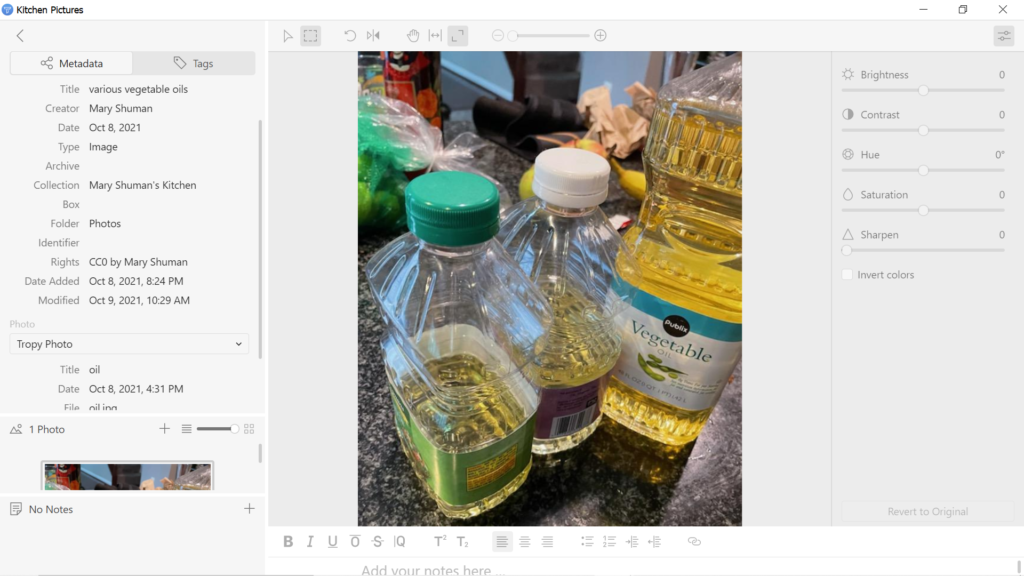
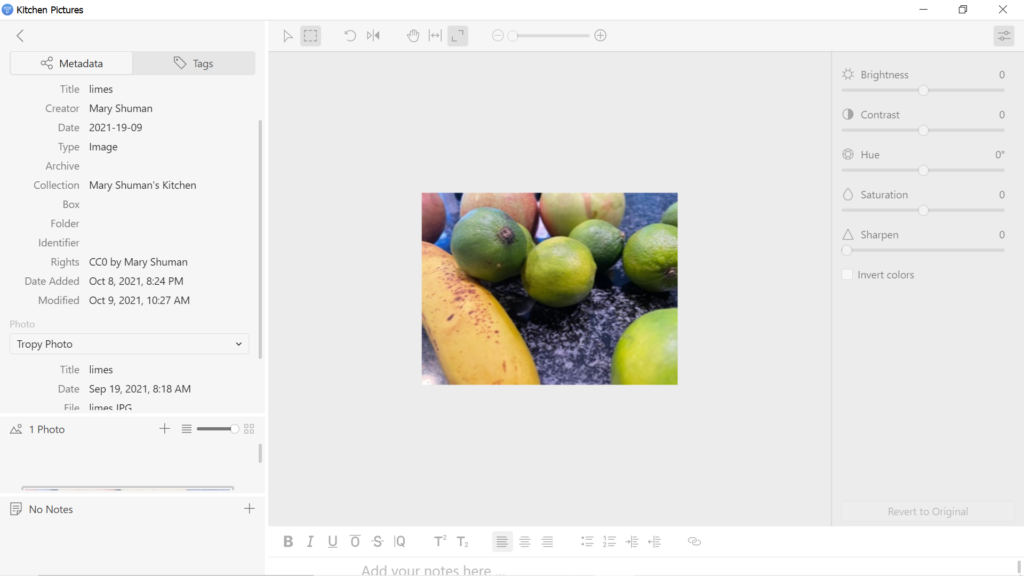
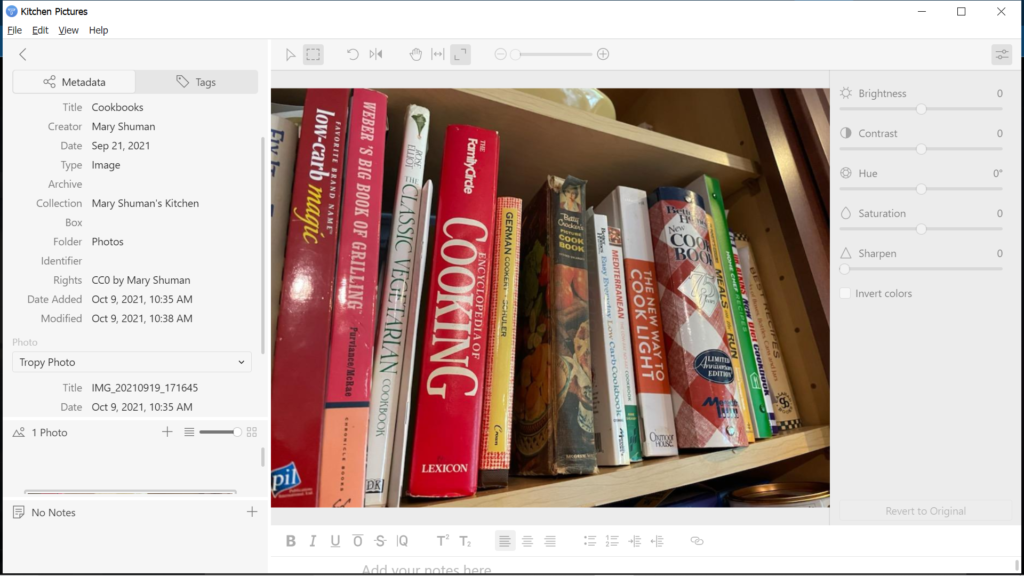
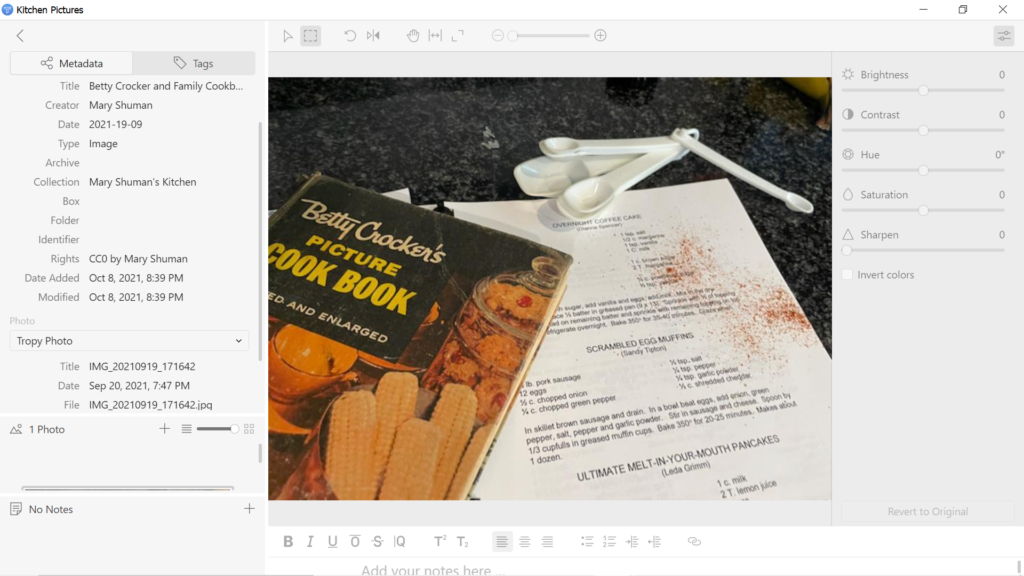
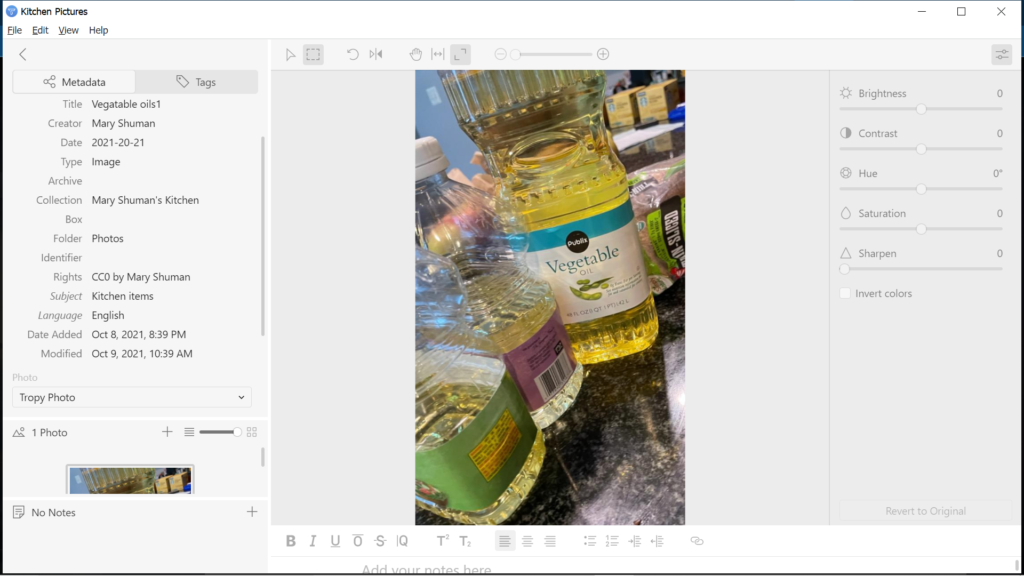
Metadata for images is valuable by the ability to search by text information versus image scrolling. Large projects with multiple images or primary sources placed into metadata categories also allow a file system for ease of use. As I am new to learning Tropy and metadata, other fields that would help keep track of photos would be google image, IPTC embedded metadata for internet use. There are multiple websites that you can upload pictures for research or personal use. The embedded metadata will help internet searches for these images. The photographer can view the camera used and metadata embedded by the digital camera used. Most images are already tagged with embedded metadata from any smartphone. This includes the date, time, geotagging of location as EXIF metadata format. These metadata categories can be removed for privacy reasons or, if needed, can be added using different image metadata formats for internet searches. IPTC metadata allows the photographer to add embedded data that is more extensive than the original EXIF Format. Therefore, a list of other fields that will enable you to publish to the internet should be added may including keywords for easier search. One other metadata program for me to be familiar with in the future is Adobe products like Photoshop.[1] Different categories for images can allow the creator to add modified dates, keywords, IPTC, address, copyright information, camera used, light, and how to license or buy the image. NFT’s are also a new way to buy and catalog digital art and photography by cryptocurrency. Metadata becomes imperative, especially copyright.
[1] Singh, Gurpeet. “Understanding Metadata for Photographers.” June 23,2020. What is Metadata in Photography and How to use it? (pixpa.com).
NASA IMAGES
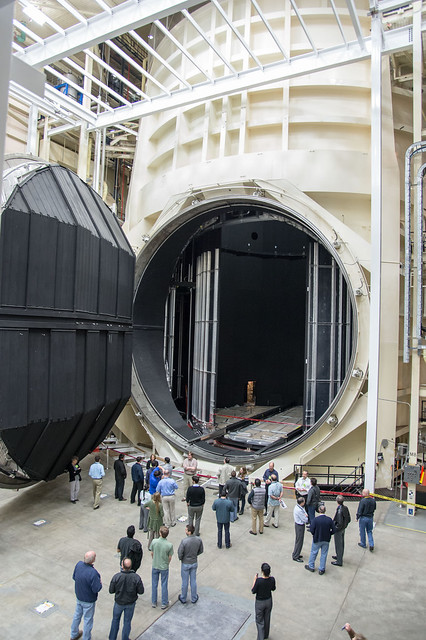
Flickr Community guidelines | Flickr
Public Domain images from NASA with no copyright restrictions. These are grouped into various galleries on Flickr that can be freely used by anyone for their projects. The Flickr guidelines are for the entire website but are helpful knowledge for any use of images on the web. NASA has several galleries elsewhere and due to it being a government agency, these are all public domain and no copyright. The top image is special to me as I have seen the vacuum chamber in person as my brother in law has worked on this chamber during his career at NASA.
